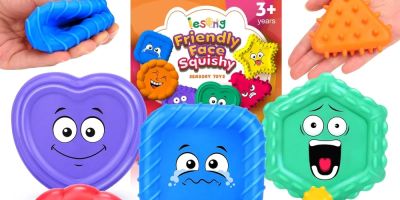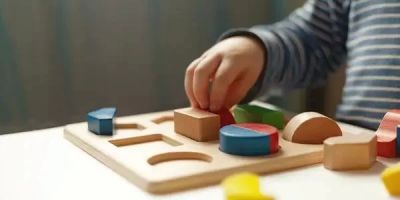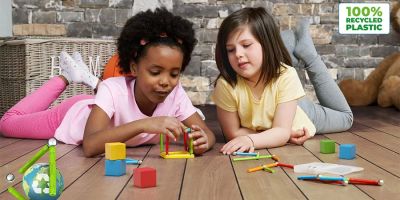
- Benefits-of-making-toys-at-home
- Essential-materials-and-tools-for-diy-toys
- Step-by-step-process-for-creating-homemade-toys
- Creative-ideas-and-real-life-examples
- How-knight-toys-can-support-your-toy-making-journey
1. Benefits of Making Toys at Home
Making your own toys at home is more than just a fun activity — it’s a rewarding experience that offers a variety of benefits for both kids and adults alike. One of the most significant advantages is the creative freedom it provides. When you craft your own toys, you tailor them to specific interests, abilities, and needs, ensuring personalized playtime that sparks imagination.
Additionally, homemade toys often promote sustainability. By repurposing everyday materials and avoiding mass-produced plastic items, you contribute to a greener planet. The process also encourages skill-building: from developing fine motor skills to learning problem-solving and design thinking. This hands-on approach often strengthens family bonds as parents and children collaborate on projects together.
In today’s digital age, where screens dominate leisure time, making toys at home can reintroduce tactile, imaginative play. Moreover, it allows parents to control the safety and educational value of the toys their children play with, an aspect often overlooked with store-bought options.
Understanding the Emotional Connection
Many parents notice a stronger attachment from their children to toys they've helped create or received as a gift made with care. This emotional connection not only extends the life of the toy but also enhances the child's play experience. The joy of sharing a story behind the toy's creation adds layers of meaning, fostering confidence and pride in the child.
2. Essential Materials and Tools for DIY Toys
Before starting your toy-making adventure, assembling the right materials and tools is crucial. Most homemade toys can be created from simple, affordable supplies found around the house or in craft stores.
Common Materials to Have on Hand
- Fabric scraps and felt: Ideal for soft toys, puppets, or stuffed animals.
- Cardboard and paper: Perfect for building blocks, puzzles, or dollhouses.
- Non-toxic paints and markers: For decorating and personalizing your creations.
- Glue, tape, and sewing kits: Essential for assembling parts securely.
- Recycled items: Bottle caps, buttons, old clothes, or wooden sticks offer endless possibilities.
Tools That Make the Process Easier
While many toys can be made with basic tools, investing in a few key items enhances quality and safety:
- Scissors with rounded tips for safety.
- Hot glue gun for fast, strong bonding (under adult supervision).
- Needle and thread for sewing soft toys.
- Rulers and pencils for precise measurements and sketches.
Having these tools ready before starting saves frustration and keeps the creative momentum flowing.
3. Step-by-Step Process for Creating Homemade Toys
Making toys at home is best approached as a multi-step creative project. This process ensures you achieve both safety and fun in your final product.
Step 1: Brainstorm and Plan
Begin by deciding what kind of toy you want to create. Consider the age and interests of the child, the materials you have, and the complexity you’re comfortable with. Sketching ideas or looking for inspiration online can help clarify your vision.
Step 2: Gather Materials
Once you have a clear plan, collect all necessary materials and tools. Organize them in your workspace to make the process smooth.
Step 3: Create a Prototype
Start with a rough version of your toy, which allows you to test size, shape, and functionality. This step helps you spot issues before final assembly.
Step 4: Construct the Toy
Using your materials, carefully assemble the toy. Pay attention to safety, especially for small parts or sharp edges. Involve children if possible—they love helping and it enhances their engagement.
Step 5: Decorate and Personalize
Decorate the toy with paints, markers, or additional embellishments to make it vibrant and unique. Personal touches like names or favorite colors increase the toy’s appeal.
Step 6: Test and Improve
Play with the toy to ensure it is sturdy and safe. Make any necessary adjustments to improve durability or fun factor. This iterative process is key to successful toy making.
4. Creative Ideas and Real-Life Examples
Bringing creativity into toy making can transform simple materials into extraordinary playthings. Here are a few inspiring ideas and stories from people who embraced homemade toys.
Story of the Cardboard Castle
One family decided to make a cardboard castle for their children’s imaginative play. Using large boxes, paint, and markers, they crafted turrets, drawbridges, and even little flags. The kids spent hours creating stories and adventures within their castle walls. This project not only entertained but also encouraged collaborative play and storytelling.
DIY Sensory Bottles
Sensory bottles filled with colorful beads, glitter, and water are simple to make and help young children with calming and focus. Parents found these bottles particularly useful for toddlers with sensory processing needs, combining fun with developmental benefits.
Soft Toys from Old Clothes
Upcycling old clothes into soft toys is a practical way to reduce waste. A grandmother shared how she turned her grandchildren’s outgrown t-shirts into cuddly teddy bears, preserving sentimental fabric and creating cherished keepsakes.
These examples highlight how toy making at home can be both meaningful and innovative.
5. How Knight Toys Can Support Your Toy-Making Journey
For those interested in exploring toy making further or seeking high-quality materials and inspiration, Knight Toys offers a wide selection of products tailored to creative families. Whether you need eco-friendly craft supplies, tools, or educational kits, Knight Toys provides resources that enhance your projects.
Their expert advice and carefully curated collections make it easier to find what fits your toy-making needs, helping you bring your ideas to life with confidence. Plus, their customer community shares tips and stories that can inspire your next creation.
Engaging with Knight Toys means accessing not just products but a supportive network for your creative endeavors in making toys at home.





